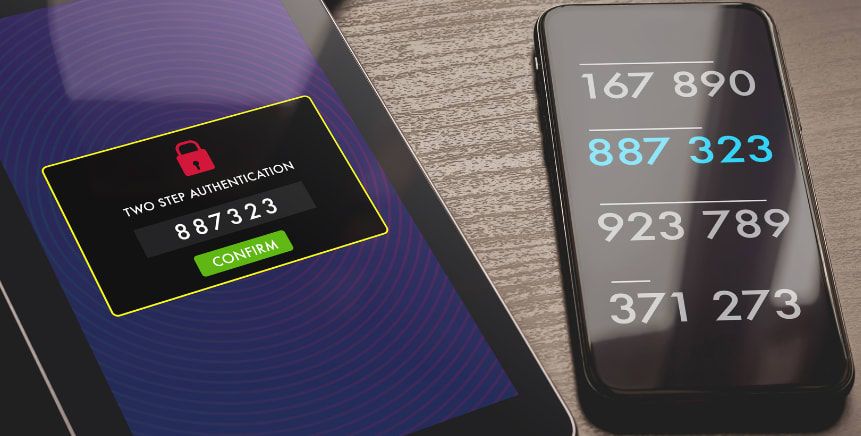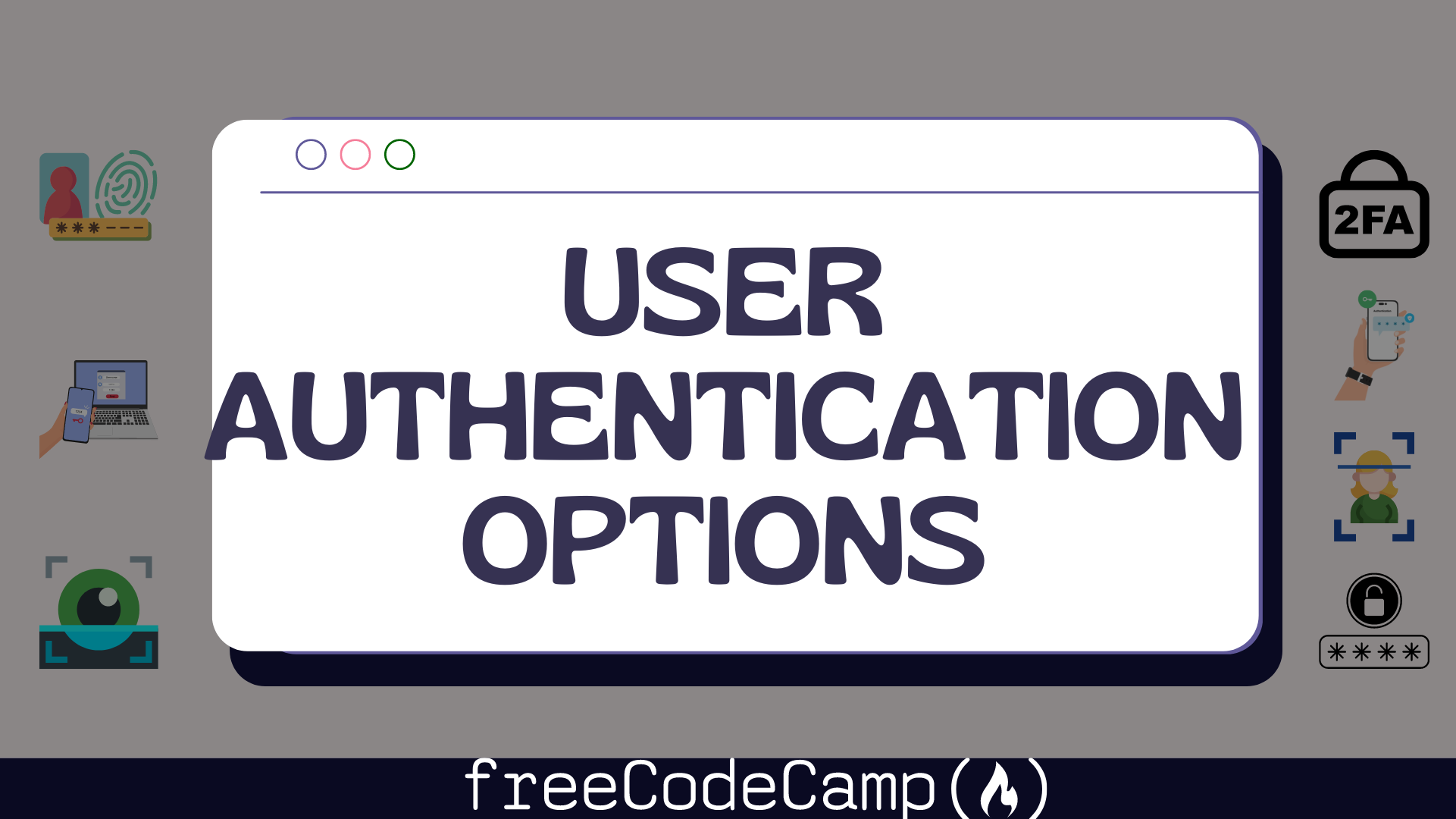In today's digital world, user authentication is essential in ensuring secure access to online accounts and resources.
With the rise of cyber-threats, companies need to ensure that their users are authenticated before accessing any sensitive information. This helps protect the online safety of both parties.
In the past, the most common authentication method that we're all likely familiar with was using a username and password to sign in to apps and services.
And if you're a programmer, you've likely developed projects where you have implemented this method as a form of authentication.
But hey! Guess what? Things have changed over the past couple of years. With advancements in technology, this means security has to be taken more seriously and we need more strict authentication approaches.
And that's what we'll learn about in this tutorial.
Different Authentication Methods
There are many different methods of authenticating users, and each has its own advantages and disadvantages. The most common methods of user authentication are:
- username and password,
- two-factor authentication,
- biometrics
just to list a few.
But as time passes, we continue to evolve and new methods are introduced that provide a safer way to store user data. Some examples of these methods include:
- Passwordless login
- Multi-factor authentication, and
- Token-based authentication
In this article, we will explore the most common methods of user authentication. By understanding the different options available, you can choose the best method for your needs.
But first, let's understand what we mean by authentication.
What is User Authentication?

To better understand what authentication is all about, we can relate it to a real world example.
Let's take a scenario where you are out at the store shopping and you need to make a payment with your credit card. You go through the steps of swiping your card to authenticate the payment, but what really happens before the transaction is complete?
After swiping your card, the machine will read the card info and send it to the issuer for verification. The issuer will then check for a couple of things in order to verify the transaction.
In this case, the issuer will check the card info against what is on record, like expiry date, card number, and account balance. If everything matches what is on record and there are sufficient funds, an authorization message is sent and the transaction is allowed.
In a case where the info doesn't match and/or there are not enough funds, a decline message is instead sent and the transaction is declined.
Now with this understanding, authentication is the process of verifying the identity of a user. User authentication verifies the identity of a user before granting access to sensitive information or systems.
What are some common authentication methods?
There are many ways to authenticate a user, and each platform has different methods that they use. But as I mentioned above, some common methods include username and password, fingerprint, facial recognition, and iris scan.
Username/password authentication
Username and password are the most common form of authentication. This is where a user enters their username and password into a login form, and if the credentials match what is stored in the database, the user is granted access.
But keep in mind that this method can be insecure if passwords are not properly encrypted or if users reuse the same password for multiple accounts.
Biometric authentication methods
Fingerprint authentication uses an individual's unique fingerprint to verify their identity. This can be done using a fingerprint scanner or by using a smartphone's built-in sensor.
This method is most commonly used in smart phones and recently there has been an increase in the use of this method in laptops, too.
Facial recognition works in a similar way, using an image of the user's face to verify their identity. Iris scanning is another biometric authentication method that uses an image of the user's iris to identify them.
More Secure Authentication Methods
Even though these have historically been the most common methods, recently we have seen a rise in other methods which are said to be more secure.
In fact, many organizations are turning to these techniques in addition to the user providing a username and password. This is considered an extra layer of security.
These newer techniques include:
1. Two-Factor Authentication

Two-factor authentication, also known as 2FA, is an additional layer of security that can be used to protect your account.
2FA is a way of verifying a user from two different approaches, thats is: using something the user already knows (like their username and password), and using something the user has, like a phone.
When 2FA is enabled, apart from entering the username and password correctly, you will be prompted for the second piece of information (usually a code generated by an app on your phone or a code sent via SMS). This makes it much more difficult for someone to gain access to your account, even if they have your password.
2FA is not foolproof, but it is more secure compared to using only username and password. This makes it a valuable tool to help keep your account safe. If you are concerned about the security of your account, enabling 2FA will be of great help.
2. Passwordless Login
Passwordless login, just as the name suggests, is a method of logging into an account without needing a username or a password. There are many reasons why you might want to stop using a password and opt for a passwordless login experience.
For one, it's more convenient for users. They don't have to remember yet another username and password combination. And two, it's more secure. There are no weak passwords to be guessed or brute-forced by attackers.
So how do you set up a passwordless login? There are a few different methods you can use, each with its own set of pros and cons.
Different methods of passwordless login
One popular method is to use an email link. When the user wants to log in, they provide their email address. They then receive an email with a link that expires after a certain amount of time. When they click the link, they're logged in without having to enter a password.
Another option is to use a one-time code generated by an app on the user's phone. The code is valid for only a short period of time, so even if someone were to intercept it, they wouldn't be able to use it.
Which method is best for you depends on your security needs and preferences. But whatever you choose, ditching the password is sure to make life easier for your users - and make your site more secure in the process.
For a practical guide on how to use the passwordless method, Auth0 has a step-by-step video guide on how to implement this.
3. Multi-factor Authentication
Also known as MFA, multi-factor authentication is an authentication method that requires a user to verify their identity by providing more than one piece of information that identifies them. This can range from something the user knows, has, or is.
This means that in addition to having a username and password, you will be required to provide extra proof depending on the system you are trying to access. This extra proof can range from a fingerprint to a secret security key or even a code generated randomly.
A good example of this authentication is when you set up an online banking system. Despite having entered a correct username and password, your might be required to either provide your fingerprint or even a code in order for some transaction to happen.
This means that even if someone was to obtain your username and password, they would still need your fingerprint or a code that has been sent to your phone in order to accomplish a specific task.
4. Token-Based Authentication
Token-based authentication is a method of authenticating users that involves providing them with a unique token. This token can be used to identify the user and provide access to certain resources. The toke usually contains a string of characters generated by the system that's sent to the user's device or email.
There are many benefits to using token-based authentication, including improved security and scalability.
Tokens, while costly and inconvenient at times, provide a greater level of security than passwords or biometrics since they are only issued when requested. In addition to this, they can also be set to expire after a certain period of time, making it more secure compared to the traditional approaches.
This method is relatively new and it has become more popular in recent years as web applications have become more complex and distributed across multiple servers. It offers several other advantages over other methods.
With token-based authentication, the token is stored on the client side, making it much more secure. In addition, since there's no need to store tokens on the server, scaling becomes much easier.
Overall, token-based authentication offers better security and performance than other methods. If you're looking to implement an auth system for your web application, consider using tokens.
Conclusion
User authentication is a critical part of any application, whether it's mobile or web.
It is important to choose an authentication method that is both secure and easy to use.
There are many different factors to consider when choosing an authentication method, but the most important thing is to choose one that will protect your users' data. Hopefully this article has given you some insights into how to do that.

